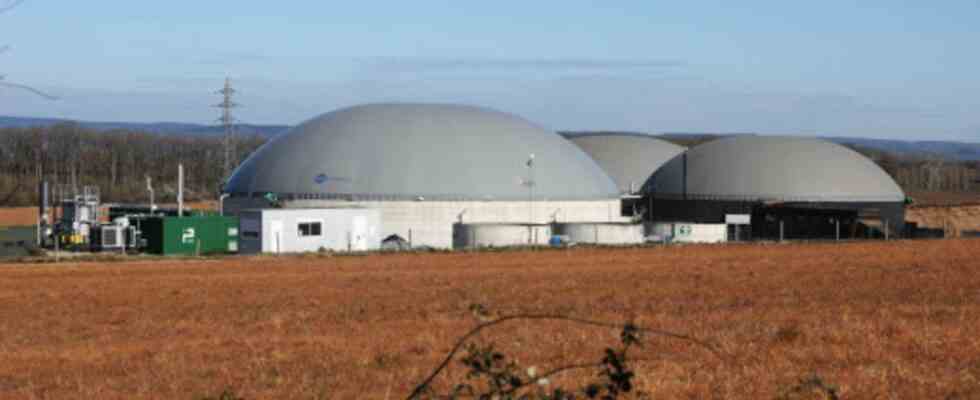“For two years, we have had an individual methanizer in cogeneration, it produces electricity which we resell to EDF and heat, which we use to heat the piggeries”, explains Thomas Lafargue, president of SAS métha- Peyroulet in Samadet, in the Landes, which raises 11,000 pigs a year. It is the most advanced department of Nouvelle-Aquitaine with a production of green gas (from anaerobic digestion) which covers more than 13% of its consumption.
On the Landes farm, the methanizer runs continuously, fed by pig manure, cooperative waste and plants called cive (intermediate crop for energy purposes). “Profitability is essentially based on the sale of electricity and savings on heating thanks to methanization, it’s a bonus,” says Thomas Lafargue. Once methanized (degraded by the action of bacteria), the slurry is transformed into digestate, which the breeder spreads on his corn fields. This farmer is a victim of the inflation of raw materials for feeding his pigs and, in this context, he particularly appreciates this diversification of his income.
“Very important deposits”
Green gas consumption is approaching 3% in New Aquitaine compared to just under 2% nationally. And the region has no intention of losing its lead. “We have a great dynamic and a great regional ambition, with 30% of green gas in the pipes by 2030, while the law imposes 10%”, estimates Arnaud Bousquet, New-Aquitaine regional director of GRDF.
With its status as the leading agricultural region, New Aquitaine would have the means to match its ambitions. It even aims for 100% green gas by 2050, a figure deemed credible by the regional director of GRDF. “It has very large deposits to largely cover its own needs,” he said. As for imports to other regions, he remains more cautious, recalling that there is still a long way to go.
“We are building pipelines that will allow these players (in methanisation) to inject, as soon as the techno-economic conditions are considered to be of general interest (we are supervised by the energy regulation commission) . Most sites prefer to inject directly into the grid rather than produce their electricity, which is a technically more complex solution.
“The Russian gas crisis and the desire to become less dependent pushes us to go further and faster,” slips Arnaud Bousquet. Nationally, 17% of gas consumption in France comes from Russia. To achieve 100% green gas, he specifies that it will not be necessary to be satisfied with the methanization of livestock effluents and crop residues but to move towards pyrogasification (from wood waste) and methanation, which transforms hydrogen into synthetic methane.
The pace in the region will undoubtedly slow down a little, due to the small drop in the electricity buy-back tariff, but good local prospects are emerging, as in Béarn, which could reach 25% green gas production from 2025.

